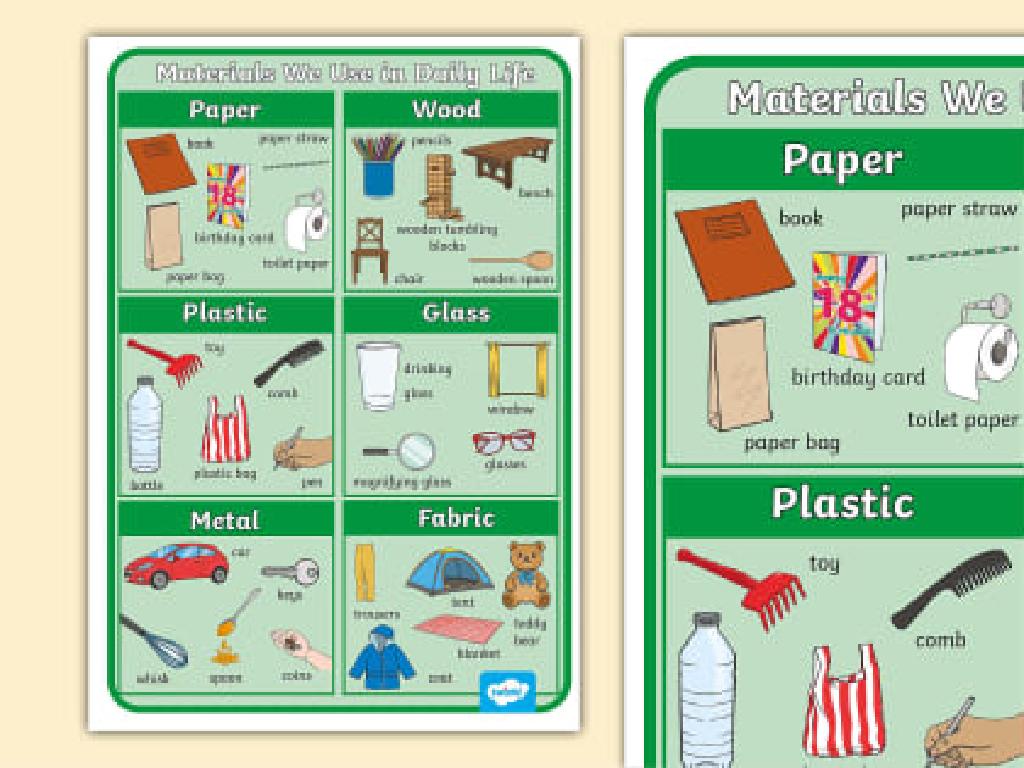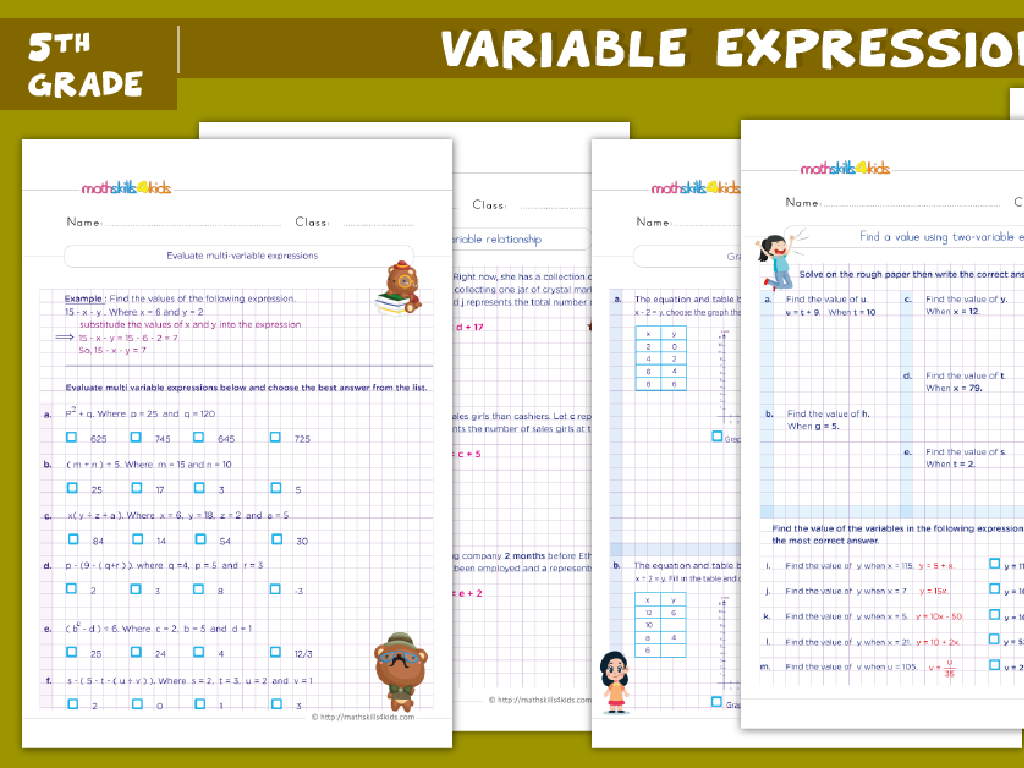Analyze Passages From Anne Frank: The Diary Of A Young Girl: Part 2
Subject: Language arts
Grade: Seventh grade
Topic: Nonfiction Book Study
Please LOG IN to download the presentation. Access is available to registered users only.
View More Content
Exploring Anne Frank’s Diary
– Nonfiction: A Real-Life Story
– Anne’s diary is a nonfiction work, depicting her life during WWII.
– Anne Frank’s historical context
– Born in 1929, Anne Frank hid from the Nazis during the Holocaust.
– Diaries reveal personal views
– Diaries like Anne’s offer a firsthand account of historical events.
– Significance of Anne’s diary
– Her diary provides insight into the experiences of Jews in hiding.
|
This slide introduces ‘Anne Frank: The Diary of a Young Girl’ as a nonfiction text that gives students a personal perspective on historical events. Discuss the genre of nonfiction and its importance in telling real-life stories. Provide a brief history of Anne Frank, setting the stage for the diary’s context during World War II and the Holocaust. Emphasize the value of diaries in understanding individual experiences and emotions during significant historical moments. Anne’s diary, in particular, is a poignant, firsthand account of a young girl’s life in hiding from the Nazis, offering a unique and personal perspective on the events of the Holocaust. Encourage students to reflect on the importance of personal narratives in preserving history.
Understanding Anne’s World: Life in the Secret Annex
– Explore the Secret Annex visually
– A virtual tour to visualize Anne’s living space
– Daily routines in hiding
– Shared chores, quiet hours, and study time
– Emotional struggles experienced
– Coping with fear, hope, and the longing for freedom
– Physical hardships endured
– Limited space, food shortages, and health concerns
|
This slide aims to provide students with a deeper understanding of Anne Frank’s daily life in the Secret Annex. Begin with a visual tour to help students imagine the confined space where Anne and her family lived. Discuss the structured daily routines they followed to maintain a sense of normalcy. Address the emotional challenges Anne wrote about, such as fear, frustration, and the desire for a normal life. Highlight the physical challenges of living in hiding, including the scarcity of food and lack of medical care. Encourage students to reflect on how they would feel in Anne’s situation and to consider the resilience and strength required to face such adversity.
Literary Elements in Anne Frank’s Diary
– Explore themes and symbols
– Themes like hope and symbols like the chestnut tree represent freedom.
– Analyze tone and mood
– Tone is Anne’s attitude; mood is the feeling we get.
– Character development of Anne
– Anne evolves from a curious child to a thoughtful young adult.
– Understanding Anne’s narrative
|
This slide aims to delve into the literary elements present in ‘Anne Frank: The Diary of a Young Girl: Part 2’. Students should identify recurring themes such as hope, freedom, and the harsh realities of war, as well as symbols that Anne uses to represent these themes. Discuss how Anne’s use of tone her attitude towards her situation and the mood how we as readers feel contribute to the effectiveness of her narrative. Observe Anne’s character development throughout her diary entries, noting how her perspectives and insights change over time. Encourage students to provide examples from the text to support their analysis and to consider how Anne’s narrative provides a personal lens on historical events.
Analyzing Passages from Anne Frank’s Diary
– Read selected passages from Part 2
– Identify key ideas and details
– Look for main themes, events, and characters
– Discuss Anne’s perspective
– Understand Anne’s viewpoint on her situation
– Reflect on Anne’s feelings
– Explore emotions Anne expresses in her writing
|
This slide is aimed at guiding students through an analytical reading of Anne Frank: The Diary of a Young Girl: Part 2. Students should focus on understanding the text by identifying the main ideas and details that are crucial to the narrative. They should also delve into Anne’s perspective, considering how her unique situation and experiences shape her view of the world around her. Additionally, students should reflect on the range of emotions Anne conveys through her writing, which can lead to a deeper understanding of her character and the historical context. Encourage students to think critically about the text and to empathize with Anne’s experiences. This exercise will not only enhance their analytical skills but also their emotional intelligence.
Comparing Perspectives in Nonfiction
– Compare Anne’s perspective
– How does Anne’s experience differ from others in hiding?
– Other accounts from the era
– Read accounts from other survivors or historical texts.
– Grasp various viewpoints
– Understand that each person’s story provides a unique lens on history.
– Share your interpretations
– Think about how you perceive Anne’s story and be ready to discuss.
|
This slide aims to deepen students’ understanding of the historical context of Anne Frank’s diary by comparing it with other accounts from the same time period. Encourage students to consider how different experiences can be reflected in personal narratives and historical records. Provide examples of other diaries, survivor stories, or historical documents for comparison. The exercise will involve students sharing their interpretations of Anne’s experiences, fostering critical thinking and empathy. Prepare to facilitate a discussion where students can express their thoughts and learn from each other’s insights.
Themes and Reflection in Anne Frank’s Diary
– Explore diary’s major themes
– Hope, Fear, Growth, Identity are key themes.
– Relate Anne’s experiences to all
– Anne’s story is a lens on universal human experiences.
– Learn from Anne’s resilience
– Her strength in difficult times teaches us about enduring hardships.
– Anne’s optimism amidst adversity
– Despite everything, Anne remained hopeful about the future.
|
This slide delves into the profound themes of Hope, Fear, Growth, and Identity found in Anne Frank’s diary. Students should consider how Anne’s personal journey during a time of immense struggle reflects broader human experiences that many can relate to. The discussion should emphasize the lessons of resilience and optimism that Anne’s writings convey, encouraging students to reflect on how they can apply these lessons to their own lives. Engage the class in a conversation about how Anne’s hopeful outlook, despite the fear and uncertainty she faced, can inspire them to maintain a positive attitude in the face of their own challenges.
Class Activity: Crafting Your Diary Entry
– Write your own diary entry
– Reflect tone, mood, and character
– Express feelings and attitudes through your writing
– Share your experiences
– Share a day that was important to you
– Discuss in class or groups
– Engage with peers for feedback and discussion
|
This activity is designed to help students understand the elements of writing that Anne Frank used in her diary. Students will write their own diary entry, focusing on expressing the tone and mood of their narrative, and showing character development through their experiences. Encourage students to think about a significant day in their life and how they’ve changed or what they’ve learned. After writing, students will share their entries either with the whole class or in small groups, fostering a sense of community and enhancing their understanding of personal narrative. Provide guidance on how to give constructive feedback. Possible activities: 1) Pair up and exchange entries, 2) Create a ‘Diary Wall’ where students can post and read entries, 3) Have a ‘Diary Day’ where students read entries aloud, 4) Write a group diary entry, 5) Discuss the similarities and differences in experiences.






